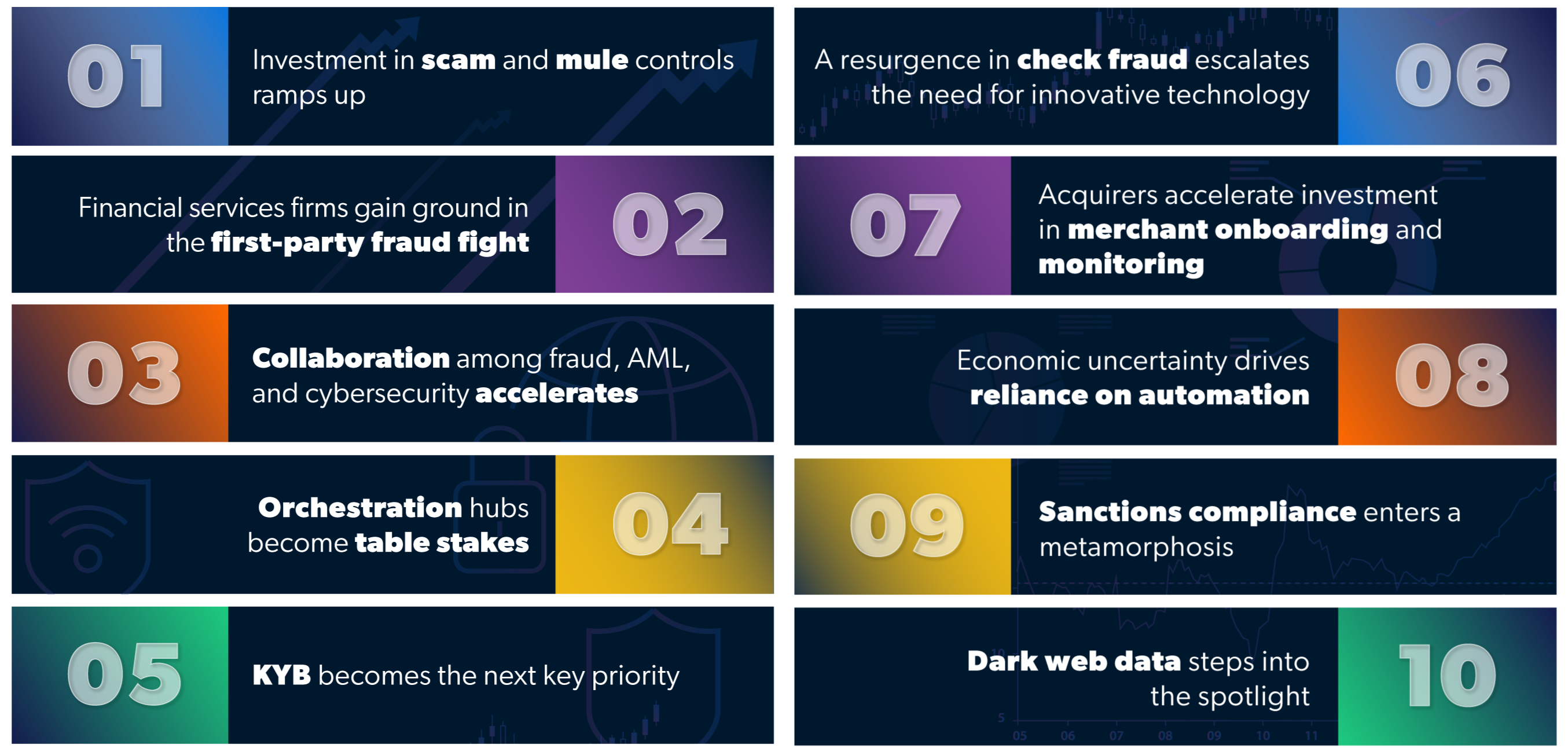Coming out of 2021, society was slowly getting out of the pandemic’s vise grip and returning to a new state of normal. Even so, financial services organizations and their financial crimes leaders continued to navigate a complicated global ecosystem, particularly as organized crime sustained its relentless assault against financial services firms, businesses, and consumers.
Economic uncertainty, growing inflation, and a possible global recession are only further complicating the financial crimes battle going into 2023.
- With consumer sentiment on economic conditions at perhaps its lowest point in decades, fraud and other financial crime is likely to rise.
- Economic volatility is compelling organizations to rethink their ongoing budgets and expenses as well as press financial crimes leaders to find ways to achieve better operational efficiency and resource utilization. As swarms of people quit their jobs, finding and retaining qualified employees has become extremely difficult.
- The regulatory landscape is becoming ever more complicated. Russia’s unprovoked and continuing war upon Ukraine has led to a continuing onslaught of new international sanctions on Russia and many of its leaders and affiliated organizations. As more consumers are victimized by rising scam attacks, financial services firms have encountered growing regulatory pressure to take increased action against scams and better protect their customers.
In 2023, fraud and anti-money laundering (AML) leaders will ratchet up investments in innovation, automation, and data. In its report Top 10 Trends in Fraud & AML, 2023: Taking on Today’s Challenges for a Secure Tomorrow, Aite-Novarica Group pinpoints the key trends shaping the fraud and AML space in 2023.

Some of these trends are:
- Investment in scam and mule controls ramps up: In direct response to the growing need to contain the rising costs of reimbursing victims, financial institutions (FIs) will be ramping up investments in operationalizing technological, operational, and policy-based controls.
- Financial services firms gain ground in the first-party fraud fight: For years, FIs and e-commerce merchants have dealt with unscrupulous consumers who purchase items and then claim that they did not buy them to avoid financial liability. In 2023, a combination of card network changes, increased data sharing among FIs and merchants, and advancements in transaction fraud systems will enable financial services firms to strike back.
- KYB becomes the next key priority: Identity is fundamental to the effectiveness of a financial crimes program. 2023 will see the skyrocketing of innovative tools and solutions that make Know Your Business (KYB) efforts more data-driven, automated, and intelligent. Financial services organizations cannot afford not to do so; the downside is too severe.
- A resurgence in check fraud escalates the need for innovative technology: Today’s legacy fraud systems are not sufficient to counteract the rising check fraud problem. As check fraud continues to escalate, the pace and extent of investments in building smarter check-fraud-fighting tools will pick up considerably in 2023.
- Economic uncertainty drives reliance on automation: Going into 2023, automation will be the financial crimes risk management professional’s best friend. Financial services firms will be gradually leaving legacy systems for more innovative platforms that offer real-time and automated decisioning capabilities and smarter user interfaces, dashboards, and workflows.
To dive into our team’s analysis of the top 10 trends impacting the fraud and AML market in 2023, read the full report or watch the recording of our February 1st webinar, where we explored each of these trends in detail. Click here to access the recording.